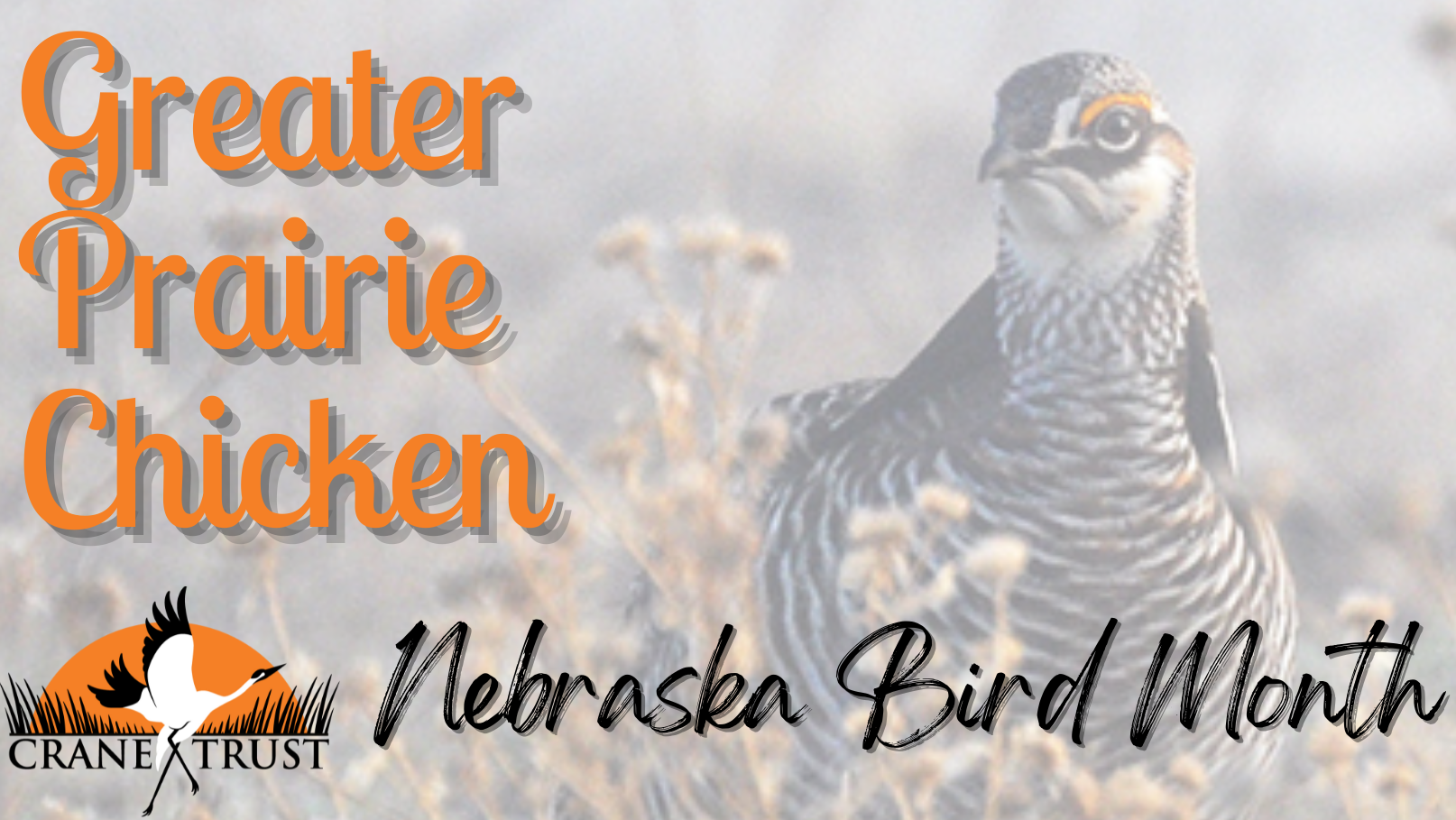
Common Name: Greater Prairie Chicken
Scientific Name: Tympanuchus cupido
Habitat: Greater Prairie-chickens require a mixture of habitats created by natural prairie disturbances such as fire and grazing as well agricultural grains for winter survival within their acquired range. Lek sites generally provide a balance of visibility to female Prairie-chickens, adjacent escape cover to hide from predators.
Food: Greater Prairie-chickens survive the harsh prairie winters of Nebraska utilizing their enlarged crops and gizzards to digest large quantities of low-quality forage (leaves and sticks, etc.) as well as waste corn where available.
Nesting: Nesting generally occurs in May and early June. Greater Prairie-chickens utilize tall ungrazed vegetation for nesting.
Behavior: Greater Prairie-chickens form leks where males gather to display before and during the breeding season. Leks are hotbeds of social activity and eventually breeding for the Greater Prairie-chickens. Greater Prairie-chickens are said to “boom” as the deep calls made by lekking males are drum-like in nature. These calls are made utilizing the brightly colored orange air sacks on their necks (apteria) that inflate and deflate as they call. They are also known for their dancing; males bend forward positioning their bodies parallel to the ground with their wings to their sides, and then perform a rapid quickstep sometimes called “strutting.”
Conservation: Greater Prairie-chickens likely peaked in numbers on their acquired range when cropland constituted between 20% and 30% of the landscape at large. Starting roughly in the 1930s agriculture became more intensive and Greater Prairie-chickens began to decline rapidly in large areas of their original and acquired ranges. Today, populations are relatively secure in north-central Nebraska, south central South Dakota, and eastern Kansas.
Fun Fact: The largest population of Greater Prairie-chickens in Nebraska, and arguably North America, resides in the Nebraska Sandhills.

